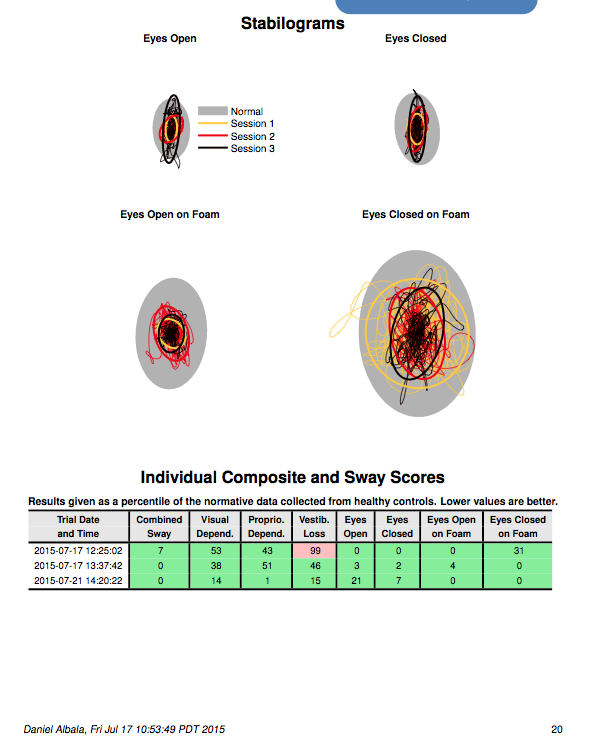Session Information
Date: Wednesday, June 7, 2017
Session Title: Ataxia
Session Time: 1:15pm-2:45pm
Location: Exhibit Hall C
Objective: This case report describes the use of sensory augmentation and an exercise routine to improve balance and gait in a patient with lithium-induced ataxia. It also compares the conditions of balance and gait before and after using Balance Wear Therapy (BWT). It reports results after 12 months of evolution and proposes an evaluation prototype and physiotherapy treatment.
Background:
Lithium is usually used in the treatment of people with bipolar disease, the administration of which can result in lithium toxicity. This patient is a 52-year-old male with a 21–month history of ataxia resulting from lithium intoxication. He was subjected to a rehabilitation program to improve gait and balance in Chile. Previous medical history includes diabetes and bipolar disorder. Patient goals were to improve gait and balance.
Methods: The patient began physiotherapy at Clinica Alemana in December 2014.
In July 2015 he went to the United States to get the BW vest.
The patient continues training balance and gait in Chile using the Balance Wear vest everyday with workout designed to improve amplitude of movement and dynamic postural control.
The patient has been evaluated each month with clinical scales from the beginning of treatment. The scales used were Minibestest (MBT), Berg Balance Scale (BBS), Modified Motor Assessment Scale (MMAS), Functional Gait Assessment (FGA), International Survey of perceived risk of falls and dynamic posturography (APDM) before and after BWT, and five months later.
Results: Functional Gait Assessment (FGA) increased 11 points. Gait velocity increased 0.15 m/s. Minibestest increased 4 points while utilizing a strategically weighted garment for 6-8 hours /day during 5 months.
After 5 months of starting to use the Balance Weight vest, the test results were maintained and confidence and autonomy to carry out his normal everyday life improved, even without necessarily using the BW vest.
Conclusions: BWT, a form of sensory augmentation appeared to help the balance, gait and confidence of this patient with ataxia.
While the physical exercise to improve range and accuracy of movement has been a factor of significant change in balance and gait, more research is needed to identify time, frequency and intensity of exercise in order to know its real impact on brain plasticity.
Further research should be done in patients with ataxia.
References:
- Disabil Rehabil. 2016 May 23:1-7.
- J Neurophysiol. 2016 Feb 1;115(2):711-6. doi: 10.1152/jn.00148.2015. Epub 2015 Dec 9.
- J Neurol. 2016 May 9.
- Hong King Psychosomatics. 2014 May-Jun;55(3):296-302. doi: 10.1016/j.psym.2013.11.007. Epub 2013 Nov 28.
- Med J Vol 18 No4. August 2012. www.hkmj.org
- Schou, M. Amdisen,A, and Trap-Jensen,J.American Journal of Psycuiatry, 1968. 125,520.
To cite this abstract in AMA style:
M. Maldonado. Relationship between sensory augmentation and exercise routine in the improvement in balance and gait in a patient with lithium-induced ataxia [abstract]. Mov Disord. 2017; 32 (suppl 2). https://www.mdsabstracts.org/abstract/relationship-between-sensory-augmentation-and-exercise-routine-in-the-improvement-in-balance-and-gait-in-a-patient-with-lithium-induced-ataxia-2/. Accessed April 2, 2025.« Back to 2017 International Congress
MDS Abstracts - https://www.mdsabstracts.org/abstract/relationship-between-sensory-augmentation-and-exercise-routine-in-the-improvement-in-balance-and-gait-in-a-patient-with-lithium-induced-ataxia-2/

